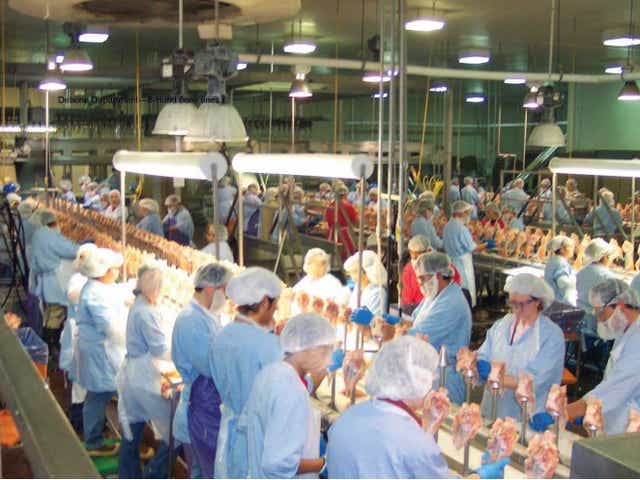
The United Food and Commercial Workers Union, the country’s largest meatpacking workers’ union, is condemning the reopening of 14 meatpacking plants under a recent executive order by the US Administration. The union is calling for CDC coronavirus safety guidelines to be made mandatory, as at least 30 meatpacking workers have died of COVID-19 and over 10,000 have been exposed to or infected by the coronavirus. The industry work practices under normal circumstances tend to put workers in close proximity to each other, working at high speed as they cut up animal carcasses.
The pandemic caused at least 30 meatpacking plants to temporarily close over the past two months, resulting in a 40% drop in pork production capacity and a 25% drop in beef production capacity, the union said. The U.S. Agriculture Department said 14 plants that had closed due to outbreaks of the virus were in the process of reopening this week. The 14 plants included a Smithfield Foods Inc pork facility in Sioux Falls, South Dakota, that started operating on May 7 and another in Waterloo, Iowa, that Tyson Foods said earlier in the week would resume limited operations. The agriculture department also said meat facilities operated by JBS USA [JBS.UL] in Minnesota and Wisconsin, and six other Tyson plants were reopening.
UFCW has previously said more protective equipment and testing would be required to open the plants. But as plants reopened without these measures in place, UFCW International President Marc Perrone criticized the decision. “Today’s rush by the Trump Administration to re-open 14 meatpacking plants without the urgent safety improvements needed is a reckless move that will put American lives at risk and further endanger the long-term security of our nation’s food supply. Since the executive order was announced, the Administration has failed to take the urgent action needed to enact clear and enforceable safety standards at these meatpacking plants.”
Health guidelines issued by CDC and OSHA to help reduce the spread of Covid-19 in slaughterhouses includes face coverings, health training in multiple languages, and more distancing between workers. Processing lines in meat plants typically run at high speeds, with employees eviscerating animals inches apart from each other. Slowing lines down and spreading workers out will undoubtedly increase the cost of producing meat, but Perry says it’s a small price to pay to protect their lives. CDC is also asking meat plants to do away with the contentious practice of offering “attendance bonuses,” in which companies offer hundreds of dollars of incentives to workers on the condition that they don’t miss their shifts.
The common criticism of OSHA and CDC’s Covid-19 guidance to meatpackers is that it’s entirely optional. This has resulted in an inconsistent patchwork of protections by plant and by state which leaves workers at risk for other outbreak. Unions are asking for standardized workplace protections against airborne diseases like Covid-19. Such requirements wouldn’t be without precedent. In 2010, following the H1N1 pandemic, OSHA began to draft mandatory guidelines to reduce the spread of viruses that spread through air and respiratory droplets. That rulemaking was finalized in 2017 but was halted during the change in US Administration.
Read more
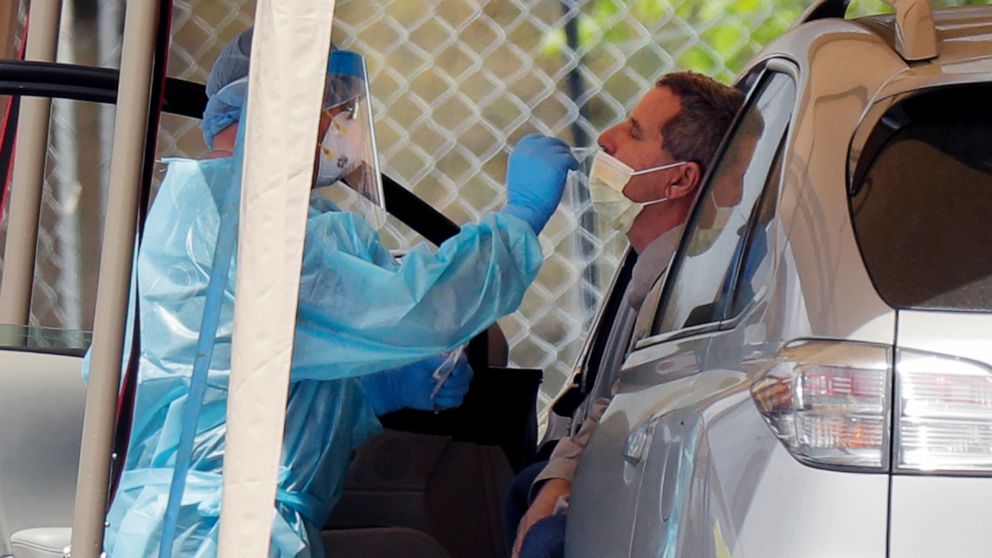
As many states slowly reopen, a pair of studies predict the COVID-19 outbreak is set to become far deadlier in the United States. A draft Federal Emergency Management Agency report forecasts that daily coronavirus deaths in the United States would rise to 3,000 people a day by June 1 — that’s a 70% increase over the current figure. Separately, the Institute for Health Metrics and Evaluation at the University of Washington estimates the U.S. death toll will reach around 135,000 by August in the United States.
The U.S. death toll from the coronavirus outbreak has topped 75,000 and is projected to keep rising in the coming weeks. The official coronavirus death toll worldwide has topped a quarter of a million, with over 3.6 million confirmed cases. The United States makes up close to one-third of confirmed cases and a quarter of known deaths, even though it represents less than 5% of the world’s population.
Over half of U.S. states have relaxed, or are preparing to loosen, social distancing and other restrictions but it has not been a smooth transition. In Georgia, more than 120 Atlanta restaurants have refused to open, saying it is not safe to do so despite Georgia Governor Brian Kemp’s lifting of the state’s shelter-in-place order. In Miami Beach, the governor had to close a popular park — just five days after reopening it — after thousands failed to adhere to new rules requiring social distancing and wearing a face mask.
Meanwhile, we continue to learn more about the virus globally as scientists and doctors try to create a vaccine. A French hospital says they treated a COVID-19 patient as early as December — a month before the government confirmed its first cases. A preliminary new study finds the novel coronavirus that first emerged in China mutated in Europe in February to become more contagious, speeding its spread around the globe. The authors of the study said they released their findings early so that people working on vaccines could see their results.
US Researchers say the novel coronavirus silently spread in the United States earlier than previously thought as well, infecting tens of thousands of people in New York and other major cities before the first US case was confirmed on January 21. A new model by the Network Science Institute at Northeastern University in Boston shows the first infections came from China in early or mid-January, and that the virus went undetected because many people were not presenting symptoms or were misdiagnosed because US doctors had not seen the virus first hand yet.
The model suggests that while Americans were still focused on China, about 28,000 people in major cities — such as New York, San Francisco and Seattle — were infected by March 1. Santa Clara County officials announced that tissue samples confirmed two people who died in early February tested positive for coronavirus. That month, a number of physicians saw patients, without travel histories, who had flu-like symptoms.
Several states, including California and Indiana, have been retracing their coronavirus timelines after discovering that the highly infectious disease started killing people earlier than previously known. These discoveries have emphasized just how much about this pandemic remains unknown. Four months since the novel coronavirus was first discovered in Wuhan, China, experts worldwide still do not fully understand how the virus started, how it impacts the body or what treatments are effective.
Read more

Canada is banning military-style assault firearms, including the AR-15, two weeks after a gunman in Nova Scotia killed 22 people during a 12-hour rampage — the worst mass shooting in Canadian history. A domestic assault late Saturday night is suspected to be the catalyst of the Nova Scotia shooting rampage that left 22 people dead. The rampage began in the quiet town of Portapique on Cobequid Bay began after the gunman assaulted his longtime girlfriend. Police said Gabriel Wortman, 51, led police on a miles-long manhunt across the Canadian province. He died after a confrontation with police. He was wearing a RCMP uniform and drove what appeared to be a police cruiser.
When Prime Minister Justin Trudeau announced the ban he said “We are closing the market for military-grade assault weapons in Canada. We are banning 1,500 models and variants of these firearms by way of regulations. These weapons were designed for one purpose and one purpose only: to kill the largest number of people in the shortest amount of time. Families of the victims deserve more than thoughts and prayers.” Family and friends of the victims have said that an emergency alert by police could have prevented some deaths. Police on Wednesday admitted that they failed to issue a timely alert to the public. Police learned about the gunman’s attire and vehicle from his girlfriend after 7 a.m. but the formal process for issuing an alert still took several hours to make its way up the chain of command. Nearly three hours after they learned the identity of the suspect, an alert had still not been issued. Prime Minister Justin Trudeau said the failure to issue an alert would be part of a larger investigation.
Police believe a domestic assault triggered the shooting spree. The couple returned home after arguing at a nearby party shortly before 10pm, where Wortman attacked his girlfriend and she fled into the woods to hide. Wortman then set his house on fire and returned to the party where he opened fire, killing seven people. The first 911 calls reporting gunshots were made at 10:01pm. When officers arrived on the scene at 10:26pm, they discovered thirteen victims who had been shot and killed both inside and outside of eight homes on Orchard Beach Drive and Portapique Beach Road, three of which were burning. Police said many had died while trying to escape the flames or in helping other victims. Wortman also shot and injured two dogs.
Police initially believed the killings were confined to the area and ordered a lock down. But the rampage, which spanned 16 locations, continued, with the gunman killing nine other people over several hours, police said. Wortman’s injured girlfriend emerged from the woods several hours after the first shooting deaths, just after 7am Sunday. She is still recovering from serious injuries but provided police key information about the gunman including a description of him, that he was impersonating an officer and a possible list of targets.
During his rampage, Wortman arrived at a home of acquaintances and killed the two occupants, as well as a neighbor who came to help. After setting the house on fire, police say he pulled over two vehicles and killed the occupants. He also shot and killed a woman walking along the road. Sometime before 10:49am, Wortman pulled alongside RCMP Constable Chad Morrison’s cruiser on Route 2 in Shubenacadie. Morrison had planned to meet fellow officer Heidi Stevenson at that location. Wortman shot into the car, injuring Morrison, who drove to a nearby hospital after reporting Wortman’s location.
As Wortman fled the scene, he collided head-on with Stevenson. Stevenson engaged Wortman, who shot and killed her, before taking her sidearm and ammunition. He also set both cars on fire and killed a nearby motorist who stopped to help. He then stopped at the home of a woman he knew and killed her before stopping for gas. Wortman was recognized by a RCMP officer at the gas station and was fatally shot.
Read more
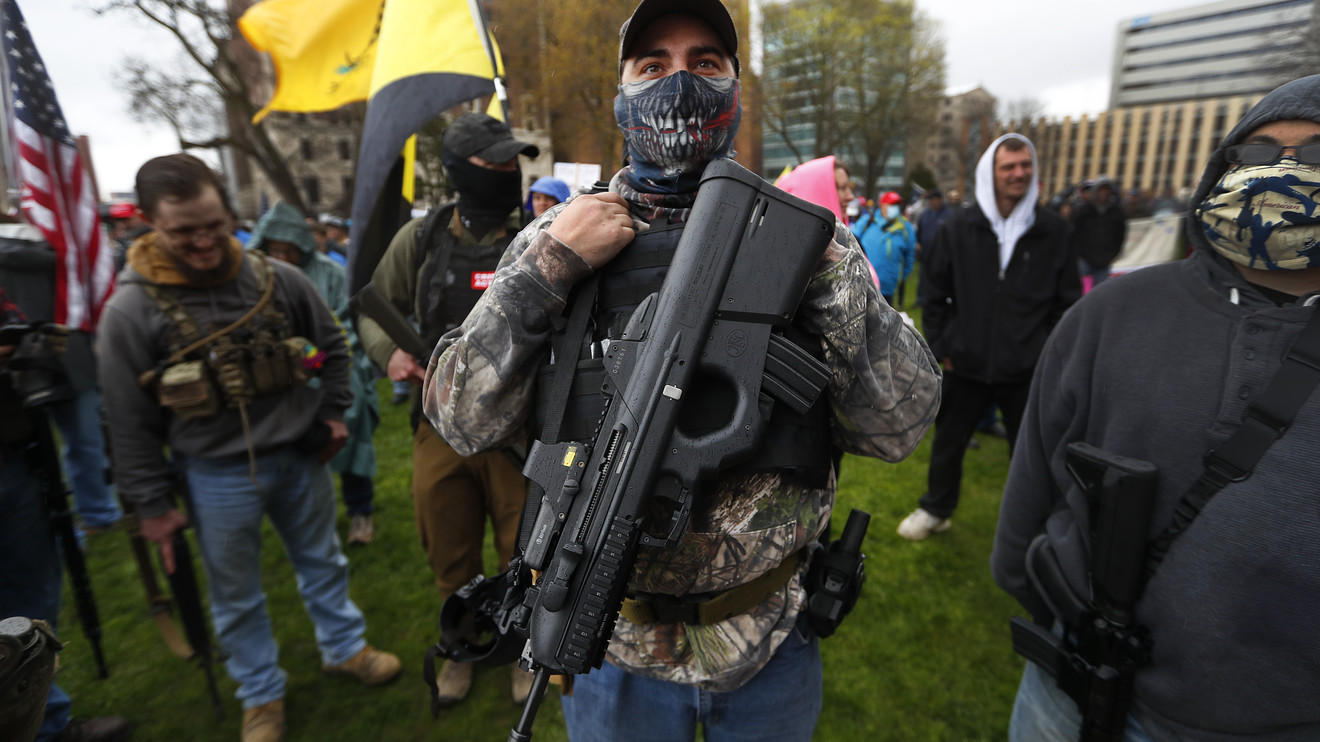
Michigan Governor Gretchen Whitmer extended a state of emergency declaration until May 28, over the objections of some state lawmakers. Whitmer signed a series of executive orders hours before the state of emergency was set to expire on April 30 and extended it to May 28, citing the growing number of cases and deaths in the state from the disease. The governor said that in some counties in western and northern Michigan, cases are doubling every six days or faster.
When the order was extended, the state had 41,379 confirmed COVID-19 cases and 3,789 deaths, according to data from the Center for Systems Science and Engineering at Johns Hopkins University. Wayne County, Michigan, is the fourth-highest county of deaths in the nation with 1,782 coronavirus-related fatalities, according to the data.
Whitmer has faced fierce backlash for her strict stay-at-home mandate. She extended the order earlier this month until May 15 but eased some restrictions on public activities as the state’s coronavirus cases stabilize. Whitmer said that while she understands that people are anxious to get back to work and are restless, Thursday’s protests were “disturbing. … Swastikas and the confederate flag, nooses and automatic rifles do not represent who we are as Michiganders. There is nothing that I want more than to just flip the switch and return to normal, but that’s not how it’s going to work, unfortunately. The only way we can get through this and take the next steps forward is if we all continue to do our part.”
Hundreds of people protested outside the Michigan Capitol building in Lansing-defying social distancing rules, many of them armed with assault rifles and wearing tactical gear. The crowd packed into the Capitol rotunda and tried to storm onto the floor of the legislative chamber. Protesters held signs, waved American flags and even carried firearms, while some chanted “Let us in!” and “This is the people’s house, you cannot lock us out.” Others tried to get onto the House floor but were blocked by state police and sergeants-at-arms.
The House and Senate had voted to approve legislation that would allow them to sue Whitmer over her emergency declarations as armed protesters stormed the state capitol. They also voted on another bill that would extend some of her emergency measures, but crucially not the stay-at-home order. Their bill would also allow restaurants, bars and gyms to reopen. Whitmer vowed to veto the bill. Amid the chaos Democrat Senator Sylvia Santana was pictured wearing a bulletproof vest and surgical mask while at her desk, as a colleague tweeted an image of rifle-wielding men on a balcony above her.
The governor is claiming authority to rule by executive order under two pieces of legislation – the 1976 Emergency Management Act and a similar 1945 law that allows a governor to declare a state of emergency and assume emergency powers. Arguments center around the fact that the 1976 law says governors must go to the Legislature if they want to extend the state of emergency past 28 days. The 1945 act says governors decide when the emergency is over.
Whitmer’s extended order bans gyms, theaters, bars and casinos from opening, and limits restaurants to carry-out and delivery orders only. Restaurants can allow up to five people inside at a time to pick up orders, but only if they follow social distancing guidelines by staying six feet apart. The restrictions do not apply to office buildings, grocery stores, markets, food pantries, pharmacies, drug stores, medical equipment/supplies providers, health care facilities, residential care facilities, juvenile justice facilities, warehouse and distribution centers, or industrial and manufacturing sites.
Read more
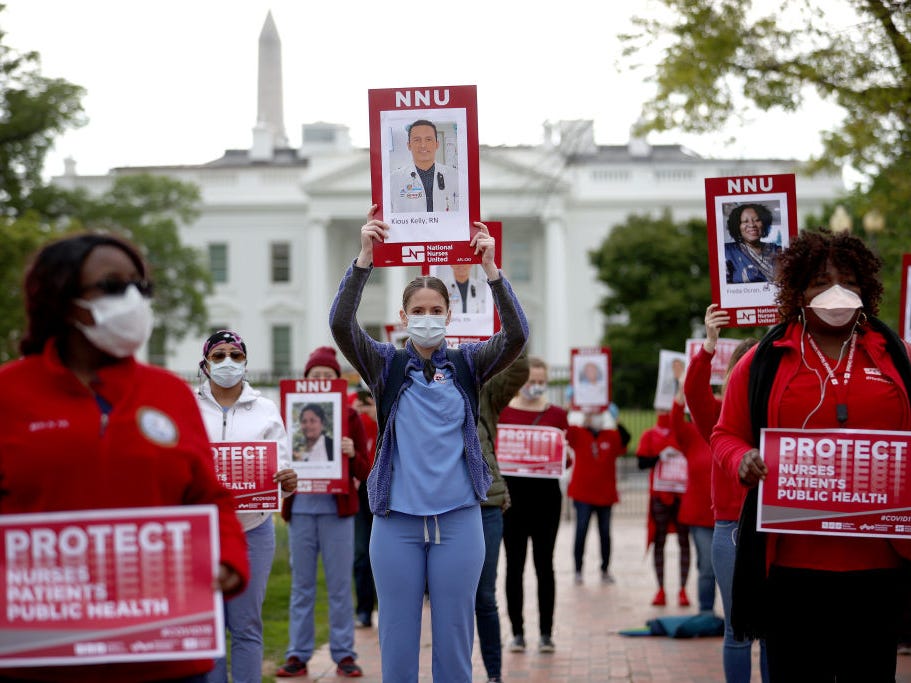
Dozens of nurses held a protest and vigil outside the White House reading the names of 50 healthcare workers who have died after becoming infected by the coronavirus on the job. The protest was organized by National Nurses United, which is demanding the Occupational Safety and Health Administration require adequate personal protective equipment for healthcare workers.
The Centers for Disease Control and Prevention reported 9,200 healthcare workers have tested positive for COVID-19, though the CDC admits the true rate is likely much higher. CDC data shows that 73% of the health workers falling ill are female and their median age is 42. US officials also say they have no comprehensive way to count those who lose their lives trying to save others. A limited CDC infection tally said 27 healthcare worker have died but stressed that the count was drawn from just 16% of the nation’s Covid-19 cases, so the true numbers of healthcare infections and deaths are certainly far higher.
Some states, including Ohio, have reported rates of healthcare worker illness as high as 20% but have not revealed data at the county, city or hospital levels. One health system, Henry Ford in the Detroit area, reported that more than 700 employees tested positive for Covid-19. Yet they have declined to say how many workers died, as in Ohio, to protect patient privacy. Media reports have shown case after case of healthcare workers across the US saying they do not have adequate protective gear to keep from getting sick.
The New York State Nurses Association filed a lawsuit the New York Department of Health and two hospitals Monday for their failure to provide adequate safety measures at the start of the coronavirus crisis. The lawsuits alleges the failures of Gov. Andrew Cuomo’s administration and the two hospitals for not providing sufficient protective equipment, like masks and gowns. NYSNA executive director Pat Kane said that more than 70% of her nurses reported being exposed to the dangerous disease and that most are still untested.
Media outlets revealed last month that at one of the hospitals named in the suit, a shortage of gowns was so dire that nurses battling the coronavirus pandemic at Mount’s Sinai’s Midtown West hospital resorted to wearing trash bags over their uniforms for protection. One of there coworkers, a beloved assistant nursing manager, Kious Kelly, died from the coronavirus. At the time of her death, Mount Sinai insisted there was no shortage of PPE.
Read more

Many Governors across the US are ending stay at home order- many of which have been in place for over a month. Reopening states to business is a difficult and controversial topic. Should states reopen too early, coronavirus cases may spike again, undoing the good social distancing did for weeks. Should they continue to stay closed, small businesses across the state may never recover and fiscal crises could severely damage many states.
Here are the states with orders set to expire:
Alaska Gov. Mike Dunleavy allowed nonessential businesses to reopen for regular business hours, with varying restrictions by sector, on April 24. Many travel and fishing restrictions have also been lifted. Alabama Gov. Brian Kemp said businesses like gyms, hair salons and barber shops could open on April 24 with theaters and restaurants reopening on April 27. Arkansas Gov. Asa Hutchinson never put an official stay-at-home order in place and has announced he hopes to ease some closures on May 4 with an announcement on when restaurants can accept dine-in customers on April 29.
Colorado’s stay-at-home order expired on April 27, moving to a new phase which allows retail businesses to do curbside pickup, other businesses can reopen with medical precautions and elective surgeries may resume. Businesses such as salons, dog groomers, personal trainers and elective medical services will be allowed to open May 1. On May 4, offices may reopen with 50% capacity.
Idaho Gov. Brad Little announced his plan to reopen the state beginning on May 1 and proceeding with four steps through June 13. The first phase would allow most retail establishments and places of worship to reopen, subject to strict social distancing guidelines. Indiana Gov. Mike Holcomb said elective surgeries may resume April 27 and he planned to lessen restrictions in early May.
Iowa has not had a stay-at-home order since April 20 and Gov. Kim Reynolds lifted the ban on nonessential surgeries beginning April 27. Kansas Gov. Laura Kelly said she is moving forward with the goal of reopening the state on May 3 if crucial guidelines are in place. Minnesota Gov. Tim Walz has projected May 4 as a reopening date.
Missouri Gov. Mike Parson is not extending the state’s stay-at-home order, set to expire on May 4. On that day, all businesses may reopen following social distancing guidelines. The mayors of Kansas City and St Louis have stay at home orders with end dates of May 15, which will supersede the state wide order and remain in effect for several counties. Montana Gov. Steve Bullock said the state’s stay-at-home order will be expire on May 3rd and certain nonessential businesses can begin to reopen beginning April 27.
Ohio’s stay-at-home order will expire May 1. Health procedures that do not require an overnight stay in the hospital may resume as well as dental and veterinary services. On May 4, manufacturing, distribution, construction and office work can resume with increased distancing and other health measures. On May 12, retail and other services may resume. Besides that, the stay-at-home order remains in place and gatherings are still limited to fewer than 10 people.
Oklahoma will lift restrictions on barber shops, nail salons, spas, elective surgeries and state parks on April 24. Movie theaters, gyms and restaurants will be allowed to reopen May 1. Pennsylvania Gov. Tom Wolf announced a phased reopening set to begin on May 8. Tennessee’s stay-at-home order would expire on April 30.
On May 1, Texas will allow retail stores, restaurants, movie theaters, malls and museums and libraries to operate at 25% capacity. However in rural counties with few cases, businesses can operate at 50% capacity. The target date for Phase 2 is May 18. Washington Gov. Jay Inslee released a plan to reopen businesses no earlier than May 4 on contingencies of a slowing of the spread of the virus.
Delaware, District of Columbia, Louisiana, Maine, Michigan, New Mexico, South Carolina, Virginia and Vermont have orders set to expire on May 15. New York will also reopen portions of the state on May 15. Connecticut’s stay at home expires on May 20. Wisconsin’s order will expire on May 26. Hawaii’s order will expire on May 30. California, New Jersey, Utah and West Virginia have no end dates to their orders.
Read more
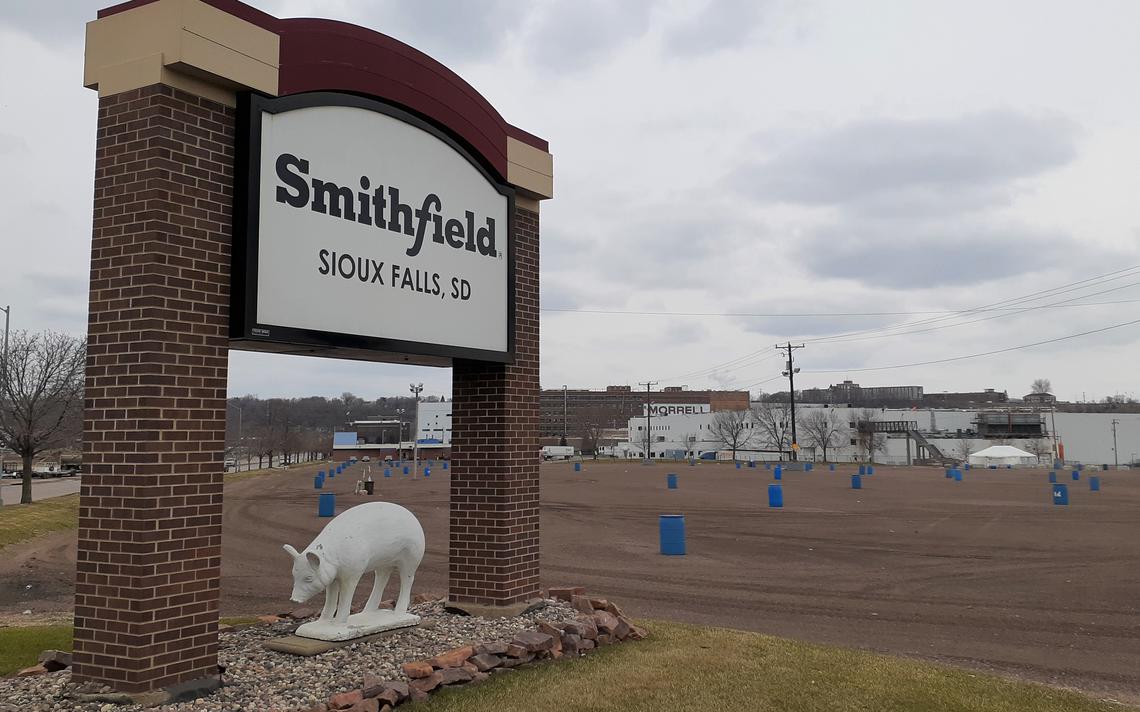
The coronavirus outbreak has hit workers in the food processing industry hard, with meatpacking plants reporting explosions in coronavirus cases. In Sioux Falls, South Dakota, a Smithfield Foods pork processing plant that employs 3, 700 people closed down indefinitely after the mayor put pressure on the CEOs to shut down for two weeks as the virus continued to spread through the plant.
The mayor spent two weeks asking them to shut down to no avail with daily reports of more workers becoming infected. He finally forced their hand by releasing a letter, signed by the governor, requesting that the plant shut down and released it to the press. At the time of the closure, the plant had 238 workers that tested positive. Now, just 3 weeks after their first worker tested positive, there are more than 700 workers who are confirmed to have Covid 19 and another 143 infections that were traced to them. The number of confirmed cases from the Smithfield plant represent 55% of the states’ cases.
Cargill Meat Solutions, a 900-worker plant in Hazleton, Pa., that packages meat in plastic for supermarket shelves in Pennsylvania and surrounding states, shut down temporarily as 130 hourly workers have tested positive for COVID-19 and a rash of employees called out sick. Three other Pennsylvania plants closed due to the virus. According to a union rep, JBS Beef in Souderton, CTI Foods hamburger-grinding plant in King of Prussia and Empire Kosher Poultry Inc. in Mifflintown are all closed amid outbreaks among employees. A 70-year-old union steward at the JBS Beef slaughterhouse in Souderton died on April 3 from respiratory failure brought on by the pandemic virus.
Meat-processing plants across several other states including Colorado, Iowa, and Nebraska are reporting COVID-19 outbreaks. A federal food inspector in New York died from the disease last month. Some companies are temporarily closing to sanitize facilities while also boosting hourly pay and offering bonuses to workers in an “essential” industry. Cargill said it would reopen its Hazleton plant as soon as it is safe. In late March, Cargill and the United Food and Commercial Workers negotiated a $2 per hour raise for shifts worked between March 23 and May 3. JBS Beef employees will be eligible for a one-time $500 bonus on May 15.
The World Health Organization, the U.S. Food and Drug Administration, and the Centers for Disease Control and Prevention say COVID-19 cannot be spread through food. It’s an “unstable virus” that is mostly spread through sneezing and person-to-person contact. Stomach acids also mostly neutralize the virus if it’s eaten as well.
Read more

France extended its coronavirus lockdown another four weeks until May 11. President Emmanuel Macron announced the extension in a televised address. France has reported over 140,000 cases and over 17,000 coronavirus deaths. From May 11 onward, he said, quarantine will be “gradually” lifted, starting with nurseries, K-12 schools, and some shops.
Macron’s address was his third since March 17, when the government ordered 67 million French people to stay home, allowing them out just once a day to exercise, buy food or medicine, or seek medical care. In the sobering televised address, Macron was apologetic, admitting he thought they were ready for the crisis but they clearly were not. He acknowledged state failures in rolling out testing and supporting healthcare workers, and admitted that he didn’t have all the answers. Macron said they have faced up to that and have had to make very difficult decisions that required them to adapt constantly as fragmentary information continued to change. “This moment, let’s be honest, has revealed cracks, shortages. Like every country in the world, we have lacked gloves, hand gel, we haven’t been able to give out as many masks as we wanted to our health professionals.”
France has seen progress with slowing the spread but Macron urged that that is no reason to lift the order. “I fully understand the effort I’m asking from you,” Macron told the nation, adding that the current rules were working. “When will we be able to return to a normal life? I would love to be able to answer you. But to be frank, I have to humbly tell you we don’t have definitive answers,” he said.
“Over the next four weeks, the rules must be respected,” he explained. Macron said the four-week extension will give France the ability to test anyone presenting COVID-19 symptoms, which will allow for better containment of the virus. He said that by May 11, France would be able to test every citizen presenting COVID-19 symptoms which is why the orders have to be extended.
He offered a rough timeline for how the country may reopen, starting with schools and shops in May and ending with restaurants, hotels, cafés and cinemas in July. International arrivals from non-European countries will remain prohibited until further notice. “We’ll end up winning,” Macron said. “But we’ll need to live with the virus for a few months.”
After a steady increase in cases until the first week of April, the number of patients in French hospitals’ intensive care units has started to decline, prompting health authorities to call a plateau in the epidemic. French hospitals are just about coping, while nursing homes are still overwhelmed. Some of that pressure has been eased by a massive effort to transfer patients by plane, helicopter or even high-speed train from hospitals in the east and Paris to the west.
Read more
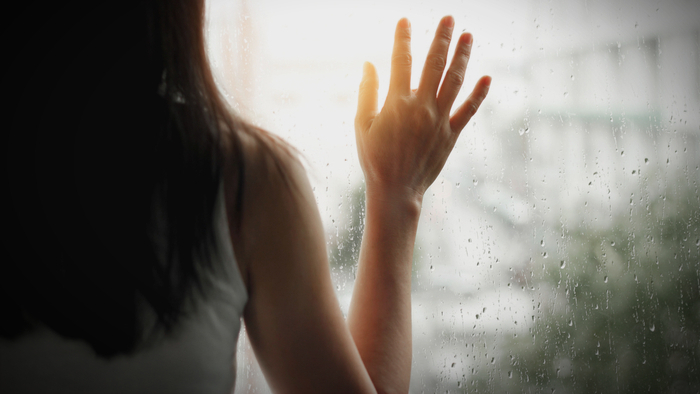
As countries impose lengthy lockdowns to combat the spread of the coronavirus, reported cases of domestic abuse have spiked around the world. In the weeks since populations worldwide have been directed to “stay home” to prevent the virus’s spread, cases of domestic violence have surged — and that’s reported cases. Women who are victimized are now confined to isolated homes with abusive partners whose coercive and physically violent tendencies are enabled and further inflamed by economic stressors. Supportive community ties are severed, while emergency services, shelter systems, and social services are overwhelmed and congenitally underfunded.
Millions of Americans are not safe from violent abuse at home and now the federal, state and local governments are telling everyone to stay home – for their own safety. For some people, going to work may be their only reprieve from emotional abuse and violence. For others, the only place their children are safe from abuse is at school. Now they have been told to stay at home. Few jobs are completely safe from the economic fallout of the coronavirus crisis and stressed abusers have their targets at home.
According to statistics released by the U. N., reports of domestic violence in France rose 30% following the country’s lockdown on March 17; during the first two weeks of lockdowns in Spain, the emergency number for domestic violence received 18% more calls; and help lines in Singapore have received 30% more calls. In the US, law enforcement agencies have seen domestic violence cases rise up to 35% in recent weeks. Keeping in mind, that 50% of domestic abuse cases go unreported.
Advocates fear domestic violence survivors may have trouble getting away from their abusers and are calling the rise an epidemic during a pandemic. They are urging communities around the world to make sure resources are readily available for survivors. Even before the pandemic, an average of 20 people in the United States experienced physical domestic violence every minute. Research shows 1 in 4 adult American women and 1 in 7 adult American men have experienced some type of severe violence – including being hit with something hard, being kicked or beaten, or being burned on purpose – at the hands of an intimate partner.
Advocates are already seeing a pattern of increasing domestic violence around the world, correlating with the timing of social distancing lockdowns. In Seattle, one of the first U.S. cities to have a major outbreak, the police saw a 21% increase in domestic violence reports in March. In Texas, during March the Montgomery County District Attorney saw a 35% increase in domestic violence cases. Police around the country are adapting their domestic violence response plans to prepare for the expected increases and to ensure victims can get help even with restrictions on public movement.
Many organizations that serve survivors of domestic violence may also struggle to stay afloat during the pandemic. Many child-protective organizations are experiencing strain with fewer workers available, so they may be unable to conduct home visits in areas with stay-at-home orders. While such operational changes may lead to inaccurate reporting of child abuse and neglect, many advocates are expecting a surge in cases to continue to rise while they’re resources are still limited during the pandemic. The recent US$2 trillion federal CARES Act included assistance for nonprofits that provide support for domestic violence victims, letting them apply for business loans and help meeting payroll.
Read more

The coronavirus pandemic continues in almost every corner of the globe, with the number of confirmed COVID-19 cases worldwide surpassing 1 million people — though the true number is certain to be far higher due to a critical lack of testing globally. The largest number of cases is in the United States with over 350,000 confirmed. Over 10,000 people in the US have died of Covid-19 as the virus continues to spread.
In Europe, COVID-19 has pushed hospitals across the continent past their breaking points. Spain has reported over 120,000 cases and their death toll topped 10,000. In the U.K., London’s ExCeL convention center has been converted into an enormous field hospital with plans to treat up to 4,000 COVID-19 patients. Over 2,300 people have died from the disease across the U.K.
In Italy, there are over 100,000 confirmed cases and their COVID-19 deaths have topped 15,000. It’s been reported that Italy’s true toll is far higher because the country can’t spare the resources to test every dead body. U.S. Vice President Mike Pence said models predict the United States faces a trajectory of COVID-19 deaths similar to Italy’s. The computer model used by the White House projects close to 82,000 COVID-19 deaths in the United States by August 4, assuming the country implements full social distancing until the end of May.
The 81,766-death projection is a slightly less grim figure than the 93,531 cited earlier by the administration. The model projects that the country may need fewer hospital beds, ventilators and other equipment than previously estimated, and that some states may reach their peak of COVID-19 deaths sooner than expected. Not all states are using the federal government’s forecasting model.
While the White House projects that coronavirus cases in the nation’s capital would peak later this month, the local Washington, DC government is relying on a different computer model that says it won’t peak until late June or early July. Health experts warn against early optimism and say it’s best to prepare for worst case scenarios.
Experts say that pandemic modelling is almost never precise and the Covid-19 pandemic, the uncertainty in the projections is because of lack of access to good data coupled with the fact that we just don’t know enough about the coronavirus. Another factor that adds to the uncertainty is how people will behave and what kinds of policies will be enacted to change contact patterns in the weeks and months ahead. The ranges estimated really depends on how much people actually adhere to social distancing policies and how quickly these policies are issued.
Read more












